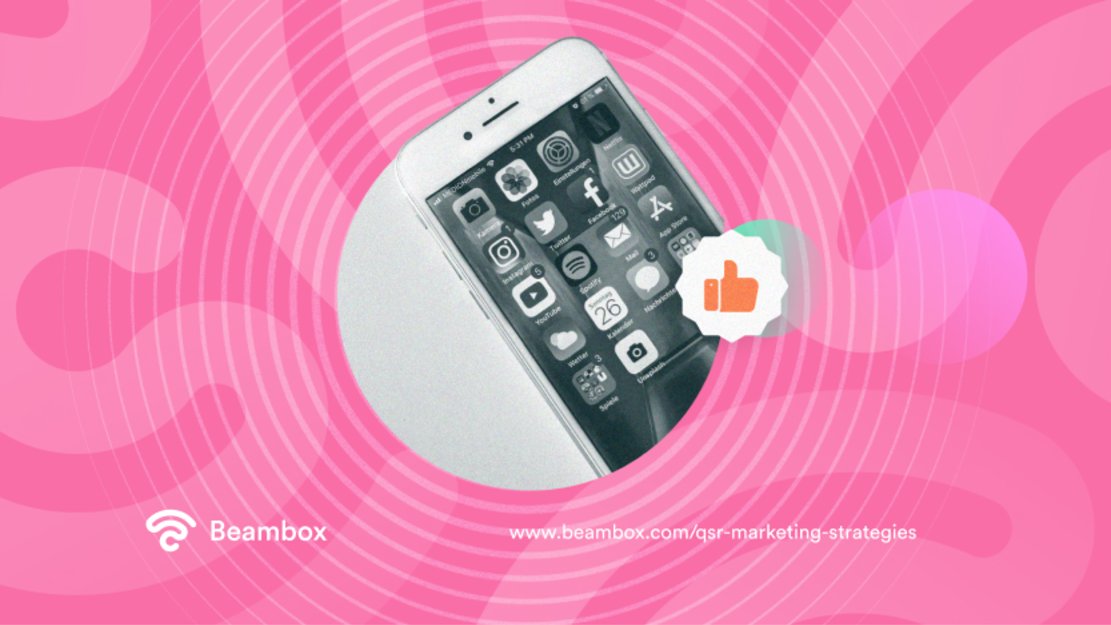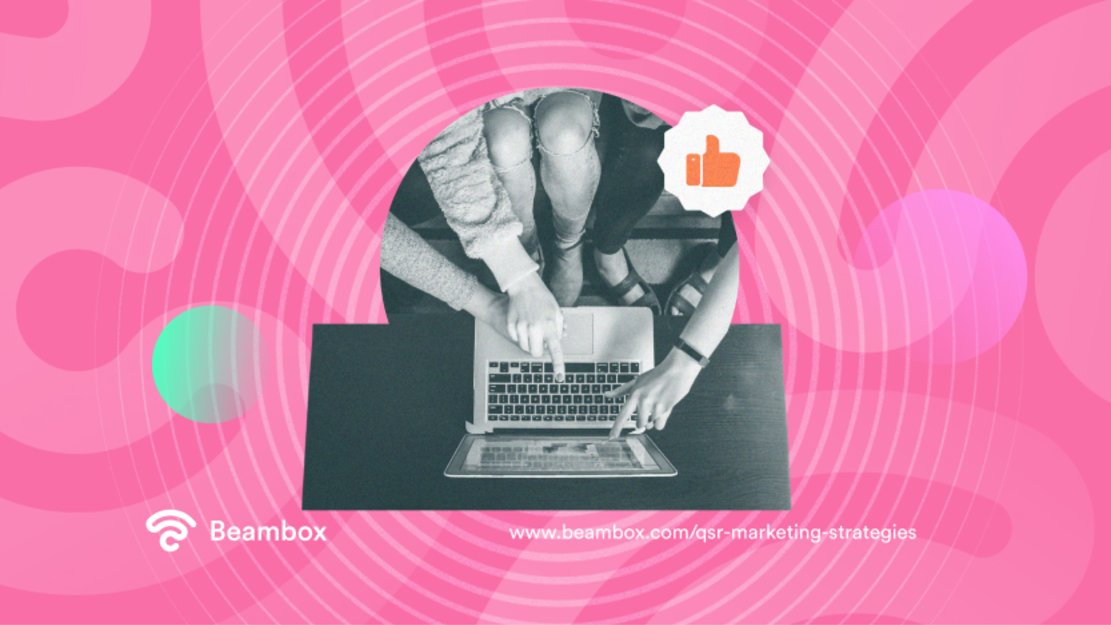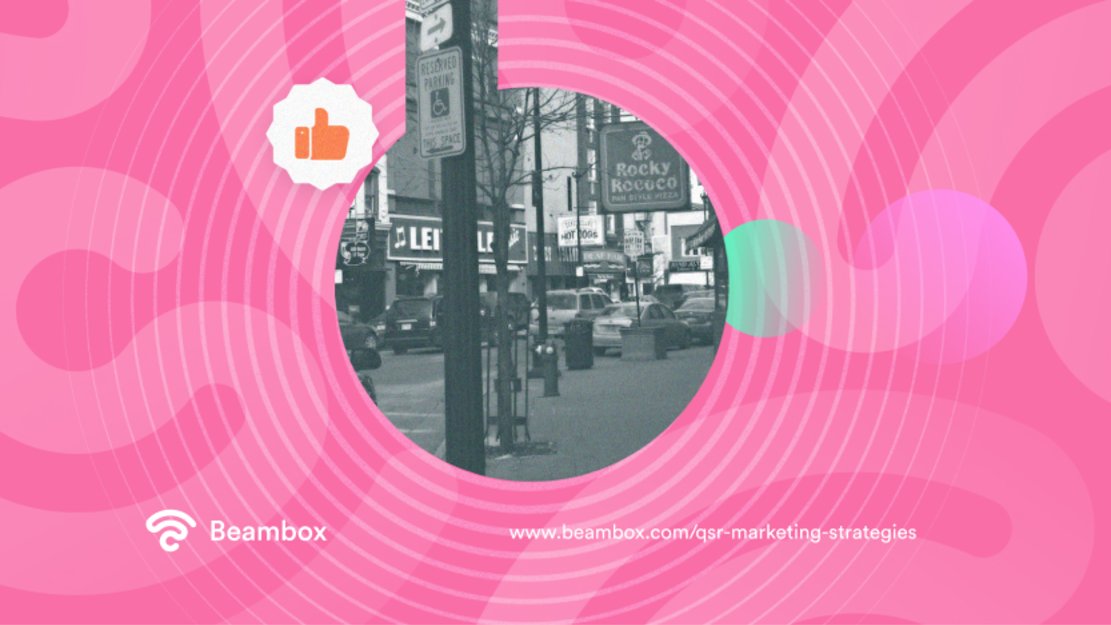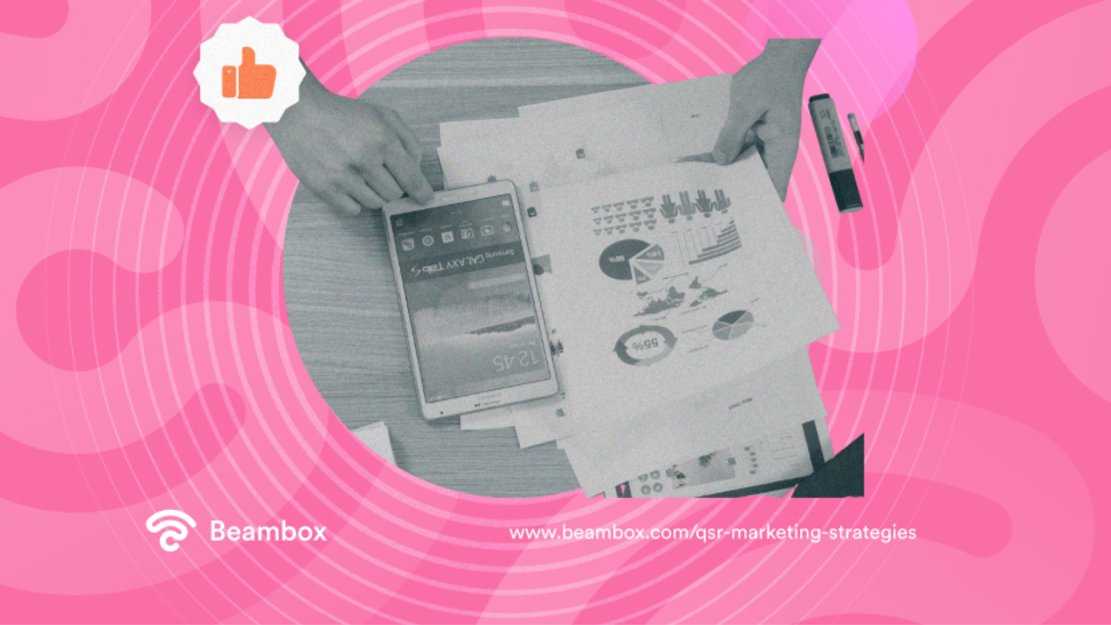QSR, or “quick serving restaurant,” is an industry term for fast food restaurants. Quick-service restaurants offer food that is quick to prepare, allowing fast food delivery. These restaurants have a limited menu that takes less time to cook and has little or no variation. The restaurant aims to provide super-speedy service. The meals can be taken out or eaten at the restaurant, which offers limited seating. Fast food is popular among people because it is fast and inexpensive. This article will talk about some popular QSR marketing strategies, including advertising online or through different media channels.

The best strategy for QSR marketing is social media marketing. Using social media platforms to increase your presence in online media is crucial.
Posting mouth-watering images of fast food items is a great way to promote your restaurant. You must have a strong social media presence to attract potential customers.
Engage with customers through interactive posts on social media sites like Instagram and Facebook. Responding to their comments and reviews can also help build a loyal customer base. Partnering with food delivery services can expand your reach and make it more convenient for customers.

How To Improve Your QSR Marketing
The above was a brief introduction to why social media is critical. However, a few lines aren’t enough to justify the importance and power of the online community. Social media is a vast network, and it is impossible to utilize every platform effectively. However, it is not the only tactic marketers employ.
It is essential to make use of social media, advertisements, and other marketing tactics to improve your QSR marketing. The fast-growing QSR industry requires new ideas to stand out from the competition. Using social media, which is the best strategy for marketing, here are some QSR marketing strategies:
QSR Website
Making a website for your restaurant is a great way to target an audience. A website helps showcase your menu and provides information about your restaurant’s location and hours. Creating a visually appealing and user-friendly website can enhance your brand image and attract more customers searching for dining options.
Search engine optimization (SEO) will improve your website’s visibility in Google searches. Update your menu for any changes in the price or food items. You can also offer online ordering for customers’ convenience. Keep track of your event calendar and inform your customers beforehand.
Email Marketing
Email marketing is the best way to reach out to your customers. You can inform them about any promotions, events, or new menu items. Collect email addresses from your website or in-store. With the help of these email addresses, build a database for potential customers to target with personalized emails. Sending regular newsletters with exclusive offers can help increase loyal customer engagement. You can use email marketing strategies to gather feedback and reviews from your customers.
This allows you to continuously improve your restaurant’s offerings and improve the QSR marketing of your restaurant. Offering online ordering will benefit you by bringing in more revenue for your restaurant.
SMS Marketing
SMS marketing is a direct way to reach your potential customers. Due to its high response rate, SMS ensures that the messages reach your customers on time. This results in direct communication with your customers. SMS is one of the best QSR marketing strategies and is cost-effective compared to other communication channels.
This personalized method helps you contact your customers in a more targeted and efficient manner. SMS marketing allows you to track and analyze customer responses. It further allows you to tailor your offerings and promotions to their tastes. Answer promptly to positive and negative reviews in a gracious manner.
Mobile Apps
A restaurant mobile app serves several purposes besides being a newfound discovery in the food marketing industry. Request that your customers use your restaurant’s mobile app and offer special promotions or discounts for online orders. Mobile apps give the benefit of contactless communication for both ordering online and payment methods. These apps also help you send push notifications to your customers whenever you upload new content. You can offer SMS loyalty rewards to customers using your restaurant’s mobile app. Link your QSR restaurant address to Google Maps for customers’ convenience in locating your restaurant.
Mobile apps have improved the quality of both restaurants and customers’ dining experiences by providing features such as:
- Easy online ordering and payment options.
- Online food tracking (where your food delivery is at any given time)
- Table reservations and waitlist management
- Digital menu card with detailed descriptions and images of each dish.
- Loyalty programs that reward customers for their continued visits and support.
- Online reviews and ratings help customers make informed decisions about where to dine.
- Social media integration
Bundle Meals
Bundle meals, or combo meals, are a combination of two or three popular items put together. For example, a combo meal consists of burgers, fries, and drinks. Bundle meals offer customers a complete meal of different food items in a single package.
Customers prefer this kind of meal because they get their favorite food items at a discounted price. Enhanced bundle meals simplify orders and increase customer satisfaction. Customers can easily choose and enjoy a complete meal without the hassle of ordering each item separately.
Ordering combo food saves time for both the customers and the restaurant’s staff. It also encourages customers to try new food items. Bundle meals can help increase sales because customers see value in getting multiple food items at a discounted price.
Print Advertising
Even though we are experiencing a digital world, print advertising is still a better marketing effort. Advertising in local magazines is quite beneficial and improves your QSR marketing. Printing your restaurant ad in a hotel or resort magazine will help tourists find your restaurant.
This advertising is also cost-effective, as your restaurant’s advertisement stays in the magazine for a longer time. Aside from magazine advertisements, you can print rack cards, brochures, and posters for your target audience. Images on menu cards are very helpful for customers deciding what to order when trying new food items.
In-Store Experience
Invest in the ambiance of your fast-casual restaurant. Make the decor warm and welcoming for your potential customers. People like to relax while enjoying their meals, so consider adding comfortable seating and soft lighting.
Creating a pleasant atmosphere with background music enhances the dining experience and encourages customers to stay longer. If a customer spends more time at a restaurant, they are likely to increase their order to pass the time.
This will result in more revenue for your restaurant. Create a safe play area for small kids to keep them busy. This gives time for the parents to enjoy their meals in peace. The play area must have soft structures and equipment to keep children safe in the event of falls.
Pop-Up Restaurants
Pop-up restaurants are temporary restaurants at different events for a limited time. Pop-up restaurants can be open for a few hours or a few months. Attend local events and organize pop-up restaurants.
This strategy will allow you to target an audience of new potential customers and increase brand awareness. Setting up a pop-up restaurant will help you come into contact with other businesses and further promote your brand.
You will need to get a license and insurance for your pop-up restaurant. Before setting up your pop-up restaurant, you must have access to electricity and running water. Look for a place that works best for you.
Happy Hours
The happy hour strategy entices customers to visit your QSR restaurant when traffic is slow. Offer special or signature food items at a discount during the happy hour timeframe. This will boost traffic to your restaurant and increase your restaurant’s revenue. This QSR strategy may bring in new customers and help extend your customer base.
Use a Hashtag (#)
A hashtag is a keyword with the symbol # to attract potential customers. A hashtag can help you target your audience and increase your restaurant’s visibility. It is a symbol on social media to help people find you with the keyword or hashtag. People use this for specific keywords or content.
Using a hashtag in your QSR marketing strategy will help interested customers find you easily. A hashtag must be relevant to your restaurant’s food items, as it helps to draw attention to your posts. A hashtag anywhere in your comments or tweets is okay.
Hashtags must be short and catchy to make them easy to remember. Using a hashtag will improve your restaurant’s popularity and increase its chances of attracting more customers.
There are different types of hashtags.
- Trendy hashtags
- Branded hashtags
- Niche hashtags
- Community hashtags
- Location-based hashtags
Your hashtag is crucial for your business, so plan how to use it correctly.
### User-Generated Content (UGC)
User-generated content is a customer’s review based on personal experience with your brand. These reviews can be in any form, like text, videos, or images. UGC is valuable for businesses. It provides authentic and free of any favoritism feedback. These reviews are from real customers and not from the restaurant itself.
By encouraging customers to share their experiences, you can build trust and credibility with potential customers. Positive reviews from customers can serve as free advertisements for your brand. Happy customers are likely to share their positive experiences with others on social media platforms. Reviews on Instagram, Facebook, or TikTok help increase your brand’s awareness.
The restaurant can also use customers’ positive reviews when advertising on social media with the customer’s consent. Most people read online reviews of a restaurant before deciding where to dine out. Good reviews and personal recommendations from satisfied customers are a great help.
Most consumers rely on the experience and satisfaction of loyal customers before deciding on dining-out options. Honest feedback from loyal customers about the restaurant creates a sense of trust among consumers. Recommendations for your restaurant from the inner social circle are more trustworthy among people.

What Are the Most Common Types of UGC?
UGC is the best and most cost-effective content for restaurant marketing. It is cost-effective in the sense that people are talking about your restaurant by posting images and videos. This content may be streaming live at the time of the customer’s happy experience. These kinds of postings raise your restaurant’s awareness without you spending any money on advertisements.
There are different types of user-generated content.
Reviews on your websites:
Online reviews are a built-in marketing tool. These reviews encourage potential customers to visit your restaurant. One QSR marketing strategy is to ask loyal customers to leave a review on your restaurant’s website. The more positive reviews, the better. Mouth-watering food images and menu item suggestions can do wonders for your restaurant.
Restaurant reviews on review sites:
An online presence is of the utmost importance for your restaurant. You can improve your QSR strategy by using some of the following sites to get more reviews for your restaurant:
- Google my business
- Amazon
- Yelp
- Uber eats
- Zomato
- Facebook
- OpenTable
Video-based content:
Video reviews carry more weight than written reviews. It is a powerful marketing tool that enables customers to see the ambiance of your restaurant. You can also show off the preparation of live meals by your chefs. The visual appeal of fresh food will attract your customers. They will more likely visit your restaurant to experience the lively atmosphere.
Influencer content:
Influencer content is the process of targeting potential customers through famous people with a lot of followers on social media. These individuals use the media platforms to praise your restaurant and post videos or images. Your followers are most likely to read them and react positively. This kind of QSR marketing strategy is a good way to improve traffic to your restaurant.

QSR vs. Fast Casual Dining Restaurants
It is easy to mix up a QSR with fast casual dining, and this leads to marketing strategy confusion. It is commonly due to the word “fast” in fast casual dining restaurants. However, both of the eateries are different, and it is vital to draw attention to the distinctions between them.
Quick-Service Restaurants
Quick-service Restaurants focus on speed and convenience. Their aim is to prepare and serve food quickly. QSR’s marketing strategy is to highlight fast delivery or takeout options, showing the speed of their service. They have a fixed menu without variables, and customers can dine in without table service. They use the strategy of bundle pricing to combine food items to attract potential customers.
Food combining means they combine burgers, fries, and drinks in one order. This gives customers satisfaction, as they get three food items for the price of one. Most QSRs have a drive-thru, which enables quick orders and quick service.
Some examples of QSR restaurants are:
- McDonald’s
- Kentucky fried chicken
- Burger King
- Wendy’s
- Taco bells
- Subway
Fast Casual Dining Restaurants
Fast casual restaurants are where you go for a nice dining experience in a relaxing and enjoyable atmosphere. They provide a good ambiance and seating. Fast-casual restaurants offer food items with different quality ingredients to attract potential customers.
Their aim is to provide a more leisurely dining experience for their customers. The food they offer is slightly more expensive than QRS restaurants. But they offer a variety of food items with variability. Diners order food at the counter and choose their table. They also cater to customers who prefer organic food.
Some examples of fast-casual restaurants are:
- Chipotle
- Sweetgreen
- Honeygrow
- Blaze Pizza
- Panera
- Panda Express

Like all restaurants, a QSR needs a marketing department to handle all the advertising and promotional activities. There is one vital strategy that the department may not perform, at least not at an optimal level. This technique involves customer data collection.
You would need to offer free guest WiFi and use that to collect customer data for various marketing purposes. Setting this up could be expensive and a hassle. If you want to avoid this headache, it is best to hire a marketing company such as Beambox.
Beambox comprises a team of marketing specialists. Using their marketing platform, they can provide secure guest WiFi, collect all the data, and implement proper QSR marketing strategies. Start your free trial today and grow your business.
Get Started With Free WiFi Marketing
Beambox helps businesses like yours grow with data capture, marketing automation and reputation management.
Sign up for 30 days free